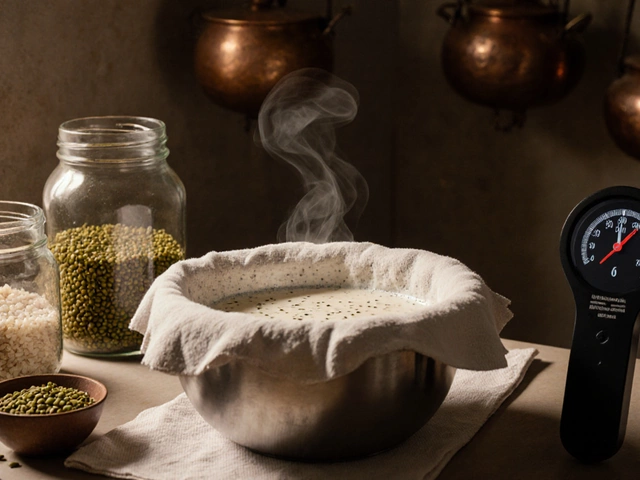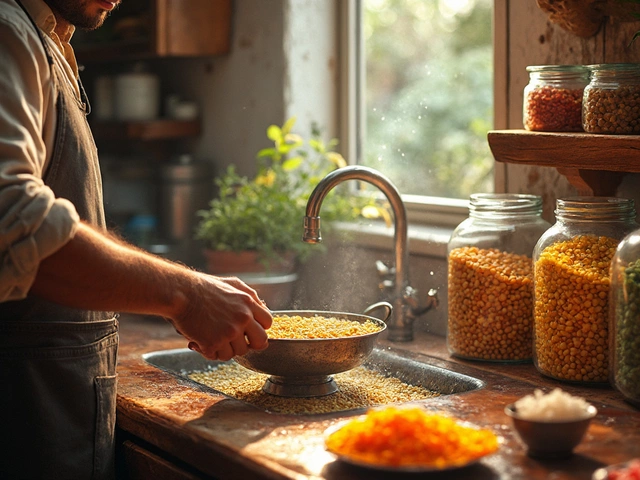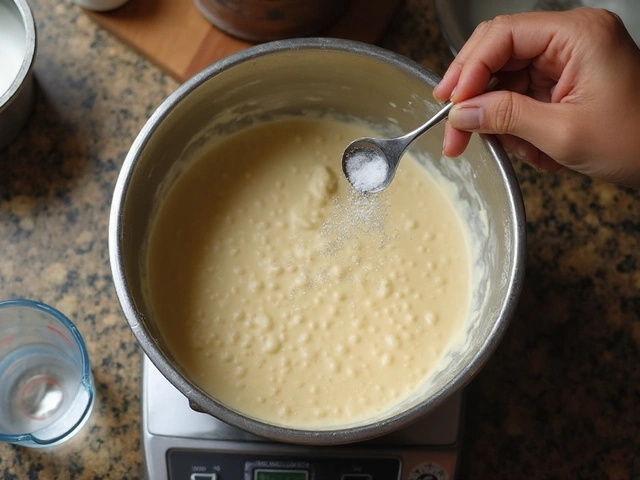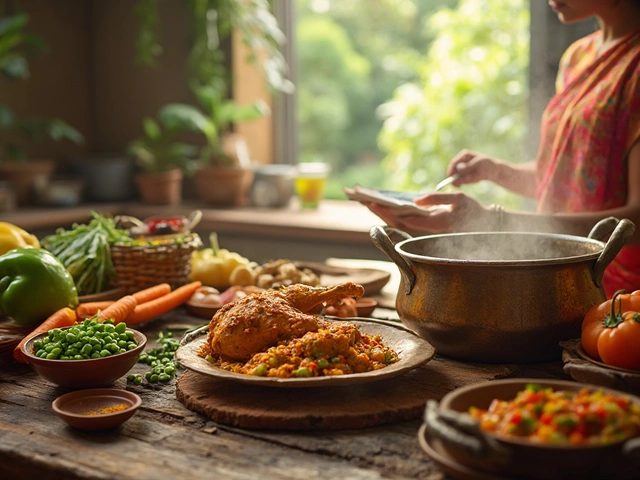Spices, aromas, and endless colors—Indian cuisine lights up every sense. But let’s be honest: sometimes you want flavor without heartburn, or spice without a stomach revolt. You might love Indian curries, but also remember that one night when bold food left you clutching your belly. Here’s where Indian food gets interesting—because not every dish is an exercise in heat tolerance. It’s actually packed with gentle foods for delicate stomachs. Some recipes were crafted with healing in mind, meant to soothe and nourish when you’re under the weather or simply out of sorts. So, which Indian foods are the unsung heroes for your digestion? Let’s unravel the ones that won’t leave your tummy grumbling, and pick up practical wisdom along the way.
Why Some Indian Foods Are Gentler On The Stomach
People often picture Indian food as loud in flavor, fiery with chili, and loaded with ghee. But if you look closer, the real heart of Indian cooking is balance and flexibility. Ancient medical wisdom, especially Ayurveda, shapes many recipes to restore the body. There’s a long tradition of food as medicine—think khichdi, cumin rice, or curd rice served to the sick or elderly. These gentle basics have a reason for existing, and their popularity in homes goes back thousands of years.
Indian cuisine draws from a massive spice palette, but many of these add more than just taste. Cumin and fennel help to reduce bloating. Ginger calms the gut. Turmeric, hailed for its anti-inflammatory punch, gets tossed into stews and soups for comfort. Often, family cooks know how to subtly blend spices for flavor, not throat-burning heat. There are even dishes where spice is barely a whisper—think milk puddings with cardamom, dal with a touch of turmeric, or white rice steaming quietly in banana leaves.
Lentils, rice, and yogurt are mainstays. They offer key nutrients and rarely upset sensitive stomachs. Fermented foods like idli and dosa are staples in South India and loved for being light, fluffy, and easy to digest. The fermentation process makes them easier for your tummy to handle. Compared to heavy meat curries or fried snacks, these dishes rarely lead to regrets. When Indian families recover from illness, the first foods they eat would surprise spice-lovers abroad—it’s often bland congee, soupy dal, or the mild comfort of rice gruel.
The science backs this up. A 2022 survey by the Indian Medical Association found that traditional dishes like moong dal khichdi and curd rice are recommended by 75% of surveyed physicians for people with digestive complaints. Even when the rest of the table is feasting on spicy biryani or creamy butter chicken, there’s usually a light option quietly waiting for the comfort seekers.
Here’s an interesting bit: in Indian households, what you eat when you’re sick is very different from what you eat at festivals. There’s wisdom in the old saying “eat with your gut, not just your eyes.” Each region in India has its own gentle recipes, crafted for good digestion. So, whether you need something easy on your stomach after a rough night or you just prefer something lighter, there’s a whole menu hiding in plain sight.
Classic Easy-On-The-Stomach Indian Dishes
If you’re new to Indian food or nursing a sensitive tummy, there are a few dishes that never disappoint. Let’s start with khichdi, a classic comfort food made from rice and moong dal. It’s soft, easy to spice, and pretty much the Indian answer to chicken soup. Traditionally, a staple for infants, elders, and anyone under the weather, it’s gentle yet filling. You can skip the heavy spices and cook it with just cumin seeds and turmeric to keep it soothing. A dollop of plain yogurt on the side helps with digestion too.
Curd rice is a superstar in South India—a blend of soft rice and homemade yogurt, sometimes mixed with a tiny splash of milk and a pinch of salt. People eat it not just for flavor, but as a cooling antidote after a spicy main course. Yogurt’s live cultures are proven to help your gut recover after big meals, and curd rice is a delicious, creamy vessel for them. If you want extra oomph, toss in grated cucumber or a sprinkle of pomegranate seeds.
Then there’s dal, especially the simpler versions using split yellow moong or masoor lentils. These lentils cook up into a fluffy, protein-rich stew with just water, salt, and turmeric. You can layer in flavor using ginger or a drizzle of clarified butter (ghee). Dal’s fiber content helps with gentle, regular digestion without straining your system.
Don’t overlook steamed idlis—those little round rice cakes popular at breakfast tables across India. They’re soft, never oily, and the fermenting process breaks down starches so they’re easier to digest. Serve with coconut chutney or sambar for a mild, hearty meal. They’re great for kids, those recovering from illness, or anyone craving something soft and light.
Want a mild bread? Roti or chapati made with whole-wheat flour, brushed with just a hint of ghee, works wonders. Avoid the heavy naan with garlic or cheese. For side dishes, stick to basic “sabzi”—mildly seasoned sautéed vegetables like bottle gourd, zucchini, or spinach. These get a simple seasoning—maybe just cumin and salt—and keep things light.
- Moong Dal Khichdi: Rice, yellow moong dal, cumin, turmeric, salt, ghee
- Curd Rice: Cooked rice mashed with yogurt, pinch of salt, garnish of coriander
- Steamed Idli: Fermented rice and urad dal batter, steamed to perfection
- Plain Dal: Yellow moong dal, water, ginger, dash of cumin, turmeric
- Mild Sabzi: Gourd or spinach sautéed with minimal spice
- Chapati: Soft roti made without butter or stuffing
When in doubt, choose dishes with fewer ingredients, soupy textures, and home-cooked vibes. Ask servers to go easy on chilies or masalas if you’re eating out. The best part? These gentle Indian foods can easily be jazzed up as you recover, adding a little more spice or oil as your appetite returns.
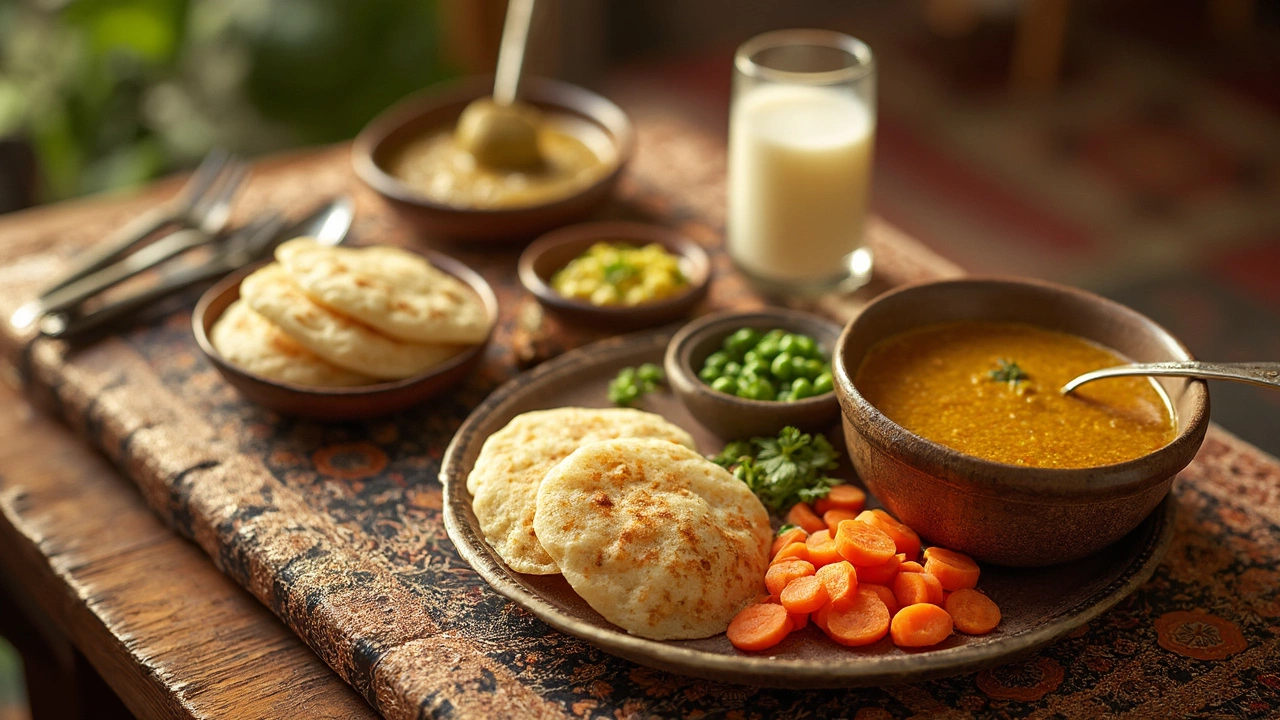
Indian Ingredients That Promote Digestive Wellness
Not all Indian spices are stomach shockers. Some actually make digestion easier. Cumin, for example, helps control gas and bloating. Ayurveda has long prescribed warm water with cumin seeds for stomach upsets. Fennel seeds, handed out after meals all over India, are another digestion-friendly superstar. They calm the stomach and add a subtle sweetness.
Ginger deserves a special mention. Whether grated into dals or steeped in chai, ginger soothes the gut with natural anti-inflammatory power. Even Western science agrees—studies from the AIIMS hospital in New Delhi have shown that adding ginger reduces post-meal nausea and indigestion by up to 40% in regular test groups.
Turmeric, that golden all-star, acts as a gentle anti-inflammatory and antioxidant. Just a pinch can do the trick, coloring your food and supporting the gut lining. Black pepper, in small doses, helps your body absorb turmeric’s good stuff even better.
Yogurt and other fermented foods like buttermilk or lassi introduce beneficial bacteria into your system, which helps rebalance the gut after illness or antibiotics. These probiotics support smoother digestion and lessen chance of acidity. Lentils, especially split yellow or red varieties, provide soluble fiber which keeps things moving and is usually gentle, even on sensitive systems.
Here’s a handy table to break down some common digestion-friendly Indian ingredients and their benefits:
| Ingredient | Digestive Benefit | Common Use in Indian Dishes |
|---|---|---|
| Cumin | Reduces bloating and aids digestion | Spices, lentils, rice |
| Ginger | Calms stomach, reduces nausea | Dals, teas, curries |
| Fennel | Soothes gut, freshens breath | Post-meal snack, in sabzi |
| Yogurt | Introduces probiotics for gut health | Curd rice, raitas, lassi |
| Turmeric | Reduces gut inflammation | Dals, curries, rice |
| Moong Dal | High in gentle fiber, easy to digest | Khichdi, dal, soup |
| Rice (white) | Low fiber, gentle base for meals | Khichdi, plain rice, congee |
Avoiding strong garam masala blends, deep-fried items, or heavy cream-based gravies is key if you want a fuss-free meal. If you’re unsure, go for plain rice or roti, dal, and steamed vegetables. You’ll get all the nutrition, minus the drama.
Smart Tips For Enjoying Indian Food With A Sensitive Stomach
Indian food can absolutely be friendly to touchy tummies—you just have to know what to look out for, and how to tweak dishes to suit yourself. First, pair your meals with homemade yogurt or a cool glass of buttermilk. These not only help tone down any spice, but support good bacteria in your digestive tract.
Next, don’t be shy about personalizing your plates. Even at restaurants, you can ask for low-spice, “no chili” versions—most Indian kitchens know the drill. Steer clear of the red-flag items: pakoras, samosas, heavily fried breads (like bhatura), and anything described as “spicy, rich, or creamy.” These can be tough on the system, especially late at night.
Portion control is your best friend. Indian food can be filling thanks to beans and rice. Start with small servings and notice how your gut reacts. You can always add more if you’re comfortable. Also, chew your food slowly; soft Indian dishes like idli and khichdi help with this, giving your body time to recognize when you’re full.
Don’t mix too many heavy foods in one meal. For instance, skip combining rich paneer curries with oily parathas—choose one gentle option and stick with light sides. Ditch sodas and opt for warm water or herbal teas with your Indian meal to help digestion. And if you ever do get a bout of stomach trouble, return to basics: simple broth, bland rice, or clear dal will be your saviors.
Many families keep fresh mint chutney handy—not just for taste, but because mint cools the gut and calms bloating. If you’re cooking at home, experiment with mild recipes first before diving into elaborate dishes. There are hundreds of gentle Indian flavors out there, all waiting for a spot at your table.
- Stick to dishes marked “plain” or “boiled” when unsure at a restaurant.
- Try a teaspoon of fennel or ajwain seeds after a meal for better digestion.
- Replace spicy pickles or chutneys with cooling raita (yogurt + cucumber).
- For dessert, try kheer (rice pudding) made with minimal sugar and cardamom.
- Stay away from “tadka” or “tempering” with lots of red chili, especially if you’re not used to it.
Light, flavorful, and made for comfort—gentle Indian food spans every region, from creamy Bengali rice pudding to the humble Gujarati rice khichu. Sensitive stomach or not, don’t be afraid to explore these nourishing plates. Some of the best Indian meals are also the mildest—and your happy gut will thank you for discovering them.







